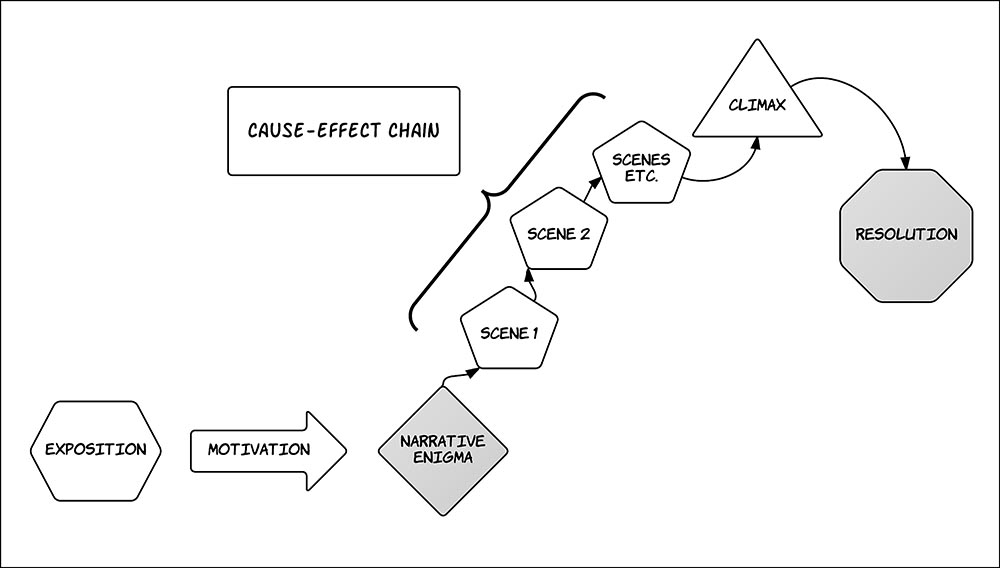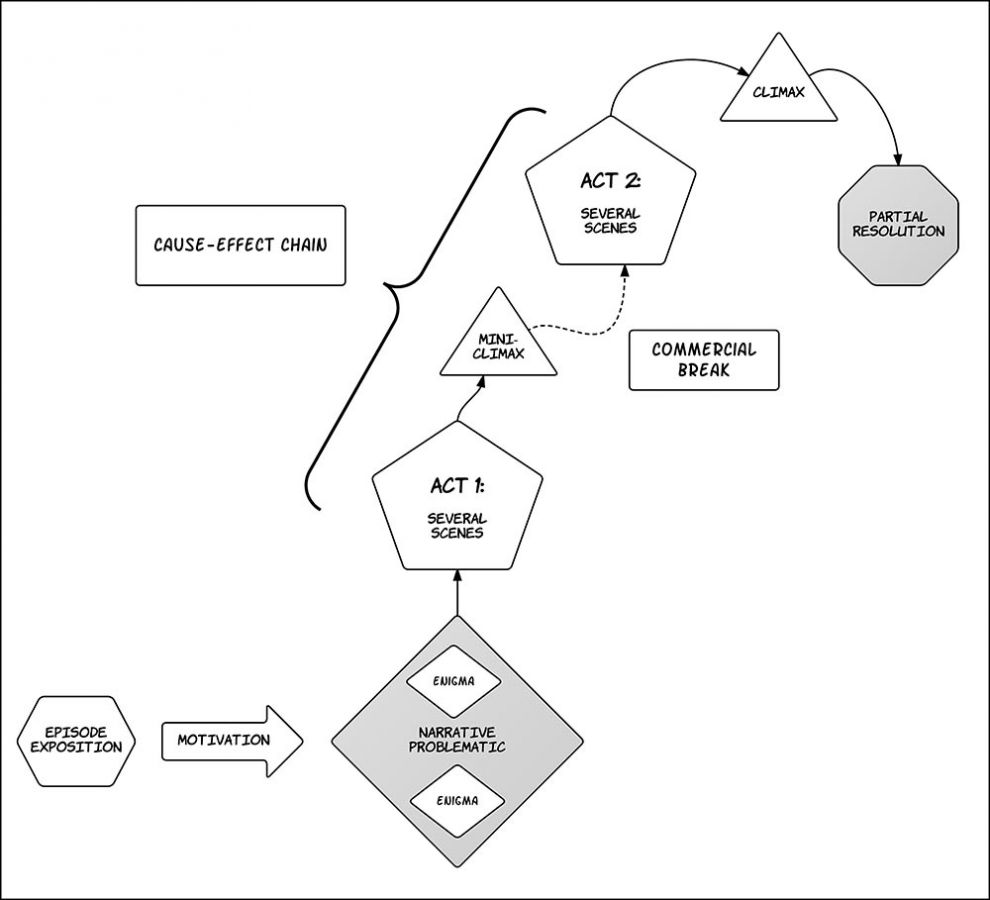Difference between pages "JCM412512/Mise-en-scene (Discussion)" and "BUI301F2022/Narrative Structure"
From Screenpedia
(Difference between pages)
Jump to navigationJump to search (→Discussion questions: added Mad Men lighting grid link) |
|||
| Line 1: | Line 1: | ||
| − | '' | + | ==Classical Hollywood cinema== |
| − | + | <gallery mode="packed" heights=600px> | |
| + | File:Narrative Structure - Classical Film.jpeg|alt=Diagram of classical narrative structure.|''Television'' Figure 3.6 The rise and fall of the narrative action in classical film. | ||
| + | </gallery> | ||
| − | + | Does ''Always Be My Maybe'' fit the classical implementation of: | |
| − | |||
| − | |||
| − | |||
| − | |||
| − | + | #Single protagonist | |
| + | #Exposition | ||
| + | #Motivation | ||
| + | #Narrative enigma | ||
| + | #Cause-effect chain | ||
| + | #*''Story time'' versus ''screen time''--in terms of duration and order | ||
| + | #Climax | ||
| + | #Resolution | ||
| − | == | + | ==The television series== |
| − | |||
| − | |||
| − | |||
| − | |||
| − | == | + | <gallery mode="packed" heights=600px> |
| − | + | File:Fig03-12 TV Series Narrative Structure - rendered.jpg|alt=Diagram of series-TV narrative structure.|''Television'' Figure 3.12 Linear-TV series' narrative structure must accommodate commercial interruptions and allow for a repeatable narrative problematic. | |
| − | + | </gallery> | |
| − | + | Break down the "The Vartabedian Conundrum" episode from ''The Big Bang Theory'' (December 8, 2008). Number each scene and provide a ''brief'' description of it. | |
| − | + | *How many scenes does it have? | |
| − | |||
| − | [[Category: | + | Does the episode contain the conventional elements of a TV series? What are the key differences between its narrative structure and that of a classical film? |
| + | #Multiple protagonists | ||
| + | #Exposition | ||
| + | #Motivation | ||
| + | #Narrative problematic | ||
| + | #Cause-effect chain | ||
| + | #Climax | ||
| + | #Resolution? | ||
| + | |||
| + | [[Category:BUI301F2022]] | ||
| + | [[Category:BUI301F2022 Discussion]] | ||
Revision as of 19:40, 24 August 2022
Classical Hollywood cinema
Does Always Be My Maybe fit the classical implementation of:
- Single protagonist
- Exposition
- Motivation
- Narrative enigma
- Cause-effect chain
- Story time versus screen time--in terms of duration and order
- Climax
- Resolution
The television series
Break down the "The Vartabedian Conundrum" episode from The Big Bang Theory (December 8, 2008). Number each scene and provide a brief description of it.
- How many scenes does it have?
Does the episode contain the conventional elements of a TV series? What are the key differences between its narrative structure and that of a classical film?
- Multiple protagonists
- Exposition
- Motivation
- Narrative problematic
- Cause-effect chain
- Climax
- Resolution?

